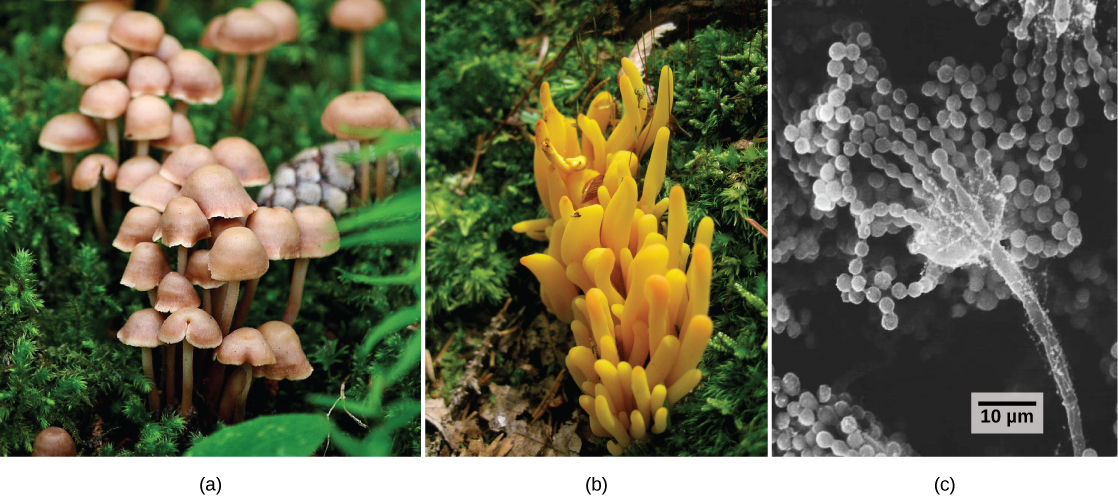| << Chapter < Page | Chapter >> Page > |

The word fungus comes from the Latin word for mushroom. Indeed, the familiar mushrooms are fungi, but there are many other types of fungi as well ( [link] ). The kingdom Fungi includes an enormous variety of living organisms collectively referred to as Eumycota, or true fungi. While scientists have identified about 100,000 species of fungi, this is only a fraction of the over 1 million species likely present on Earth. Edible mushrooms, yeasts, black mold, and Penicillium notatum (the producer of the antibiotic penicillin) are all members of the kingdom Fungi, which belongs to the domain Eukarya. As eukaryotes, a typical fungal cell contains a true nucleus and many membrane-bound organelles.
Fungi were once considered plant-like organisms; however, DNA comparisons have shown that fungi are more closely related to animals than plants. Fungi are not capable of photosynthesis: They use complex organic compounds as sources of energy and carbon. Some fungal organisms multiply only asexually, whereas others undergo both asexual reproduction and sexual reproduction. Most fungi produce a large number of spores that are disseminated by the wind. Like bacteria, fungi play an essential role in ecosystems, because they are decomposers and participate in the cycling of nutrients by breaking down organic materials into simple molecules.
Fungi often interact with other organisms, forming mutually beneficial or mutualistic associations. Fungi also cause serious infections in plants and animals. For example, Dutch elm disease is a particularly devastating fungal infection that destroys many native species of elm ( Ulmus spp.). The fungus infects the vascular system of the tree. It was accidentally introduced to North America in the 1900s and decimated elm trees across the continent. Dutch elm disease is caused by the fungus Ophiostoma ulmi . The elm bark beetle acts as a vector and transmits the disease from tree to tree. Many European and Asiatic elms are less susceptible than American elms.
In humans, fungal infections are generally considered challenging to treat because, unlike bacteria, they do not respond to traditional antibiotic therapy since they are also eukaryotes. These infections may prove deadly for individuals with a compromised immune system.

Notification Switch
Would you like to follow the 'Concepts of biology' conversation and receive update notifications?